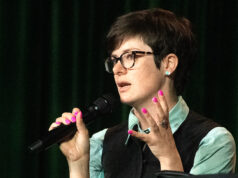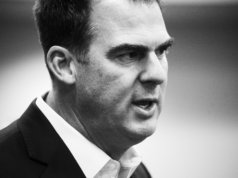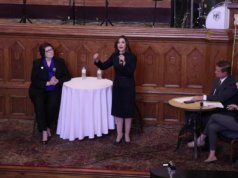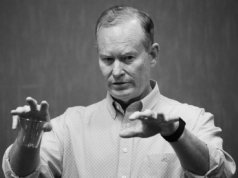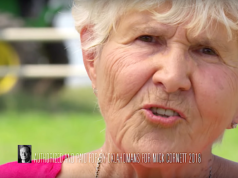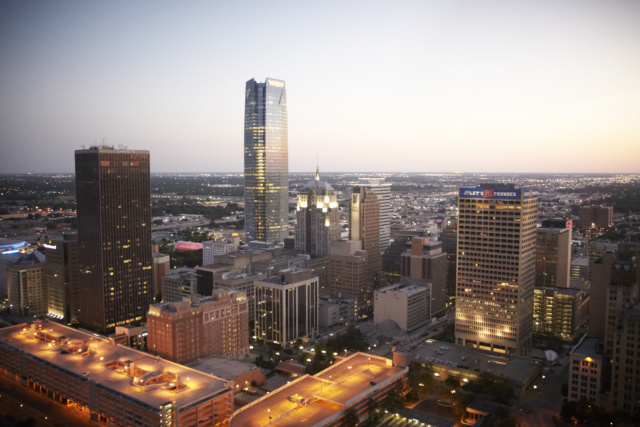
Earlier this month, creative entrepreneurs, designers and civic leaders asked the right questions for a city seeking to prosper in the 21st century.
At the Oklahoma City Mayor’s Development Roundtable, Mayor Mick Cornett and the Dallas urban designer Patrick Kennedy offered insights into how autonomous cars, for instance, will transform cities in coming years. Both Cornett and Kennedy presented hopeful scenarios with regard to this rapidly approaching revolutionary transformation. They also discussed possible unintended negative outcomes, maybe including a new burst of suburban sprawl.
When Kennedy tackled some of Dallas’ most intractable problems, a 2010 transportation study concluded that the “inner highway loop is a problem but there is nothing we can do about it.” As he explained, even in the 1950s, when highways came into cities, they made urban life worse. But he described a new pattern in Dallas and elsewhere where taking highways out of cities makes them better.
Kennedy also captured the essence of the roundtable when he predicted that the rise of driverless cars is inevitable, so we must plan ahead but also expect turmoil.
Kennedy concluded that Americans spend $2 trillion on cars, and that is not sustainable. Urban planners used to promote roads as a way to “save time on streets.” Now, urban designers have shifted their focus to promoting ways to “spend time” on people-friendly streets.
KC mayor highlights historical causes
The roundtable’s prognostications were also rooted in history. Kansas City Mayor Sly James recalled the way that highways created neighborhoods that were lousy places for families but provided a great supply of haunted houses. Oklahoma City developer Gina Sofola, who is revitalizing the old Page Woodson school building at 600 N. High Street, remembered the way that urban renewal wrecked her near-northeast neighborhood. African-American children of her generation were told to “get your education and don’t come back to this city.”
The historical causes of these tragedies, of course, are the ways highways and the misuse of urban renewal and federal housing programs subsidized suburban sprawl (and, I would add, white flight).
Mayor James displayed great humor when he described ways for getting out of the past “car-centric mentality” and acknowledged that pushback would occur. He warned of grumbling coming out of the CAVE (“citizens against virtually everything”).
Housing affordability and transport
The Oklahoma City Housing Authority’s Ian Colgan gave a thorough analysis of Oklahoma City’s strengths and weaknesses in terms of affordable housing. He also linked that issue to the city’s transportation problems. Colgan explained how OKC used low-cost housing to our advantage and disadvantage. The city does well in offering homes for the working poor but generally fails its most vulnerable poor. Moreover, OKC only has 1/20th of the funds it needs for public housing.
In terms of most housing costs, Oklahoma City still has a competitive advantage, but we face the same affordable-housing crisis as the rest of the nation. The Oklahoman’s Richard Mize recently reviewed the threat of rising rents and home prices, reporting quotes from the Housing Authority’s Colgan:
“Over the past five years alone, median home value increased by 11 percent and median rent increased by 16 percent,” Colgan said. “Over the same time, median household income grew by only 1 percent, and per capita income decreased by 3 percent.”
Colgan also challenged the audience to widen our perspective and think of the cost of housing plus transportation. When it comes to paying for a place to live along with the costs of leaving for work and leisure and then returning home, OKC is at a disadvantage in terms of cities it competes with, such as Denver, Portland, Minneapolis, Seattle and Austin.
Push for placemaking continues
Developer Richard McKown offered a surprising notion of how Oklahoma City can nurture the type of neighborhoods that would provide another competitive advantage. McKown showed examples of “tiny houses” — homes with 400 square feet of living space or less. Their obvious virtues are affordability as well as the opportunity to reduce urban sprawl. Tiny houses can attract and retain millennials, creating compact but livable neighborhoods that lend themselves to dynamic streetscapes. They contribute to placemaking, or the nurturing of spaces where the public comes together in an identifiable location to promote neighborliness and the sharing of ideas and creativity.
Understanding the ‘scale of sweat’
McKown reminded us that 21st-century kids need to learn about more than navigating computer keyboards. They are being raised in a society preoccupied by the “scale of capital.” But young people need to understand the “scale of sweat,” McKown explained. They need the hands-on learning that comes with the design and assembly of tiny houses.
And that brings us to the cumulative message of the other presenters, mostly Oklahoman entrepreneurs:
- Jim Parrack, of commercial real estate firm Price and Edwards Company, described the way that retail stores are being reinvented.
- Joel Irby, of Stonecloud Brewing Company, returned from Colorado to Oklahoma City to help “jumpstart the local brewing scene” by brewing in the old Sunshine Laundry building.
- Kris Kanaly, of the Oklahoma Mural Syndicate, explained how street art and murals on the Plaza Walls helped energize N.W. 16th Street in the Plaza District.
- Local attorney Bud Scott highlighted his work at revitalizing the Farmers Market District, much like Sofola is doing in the near northeast.
These projects are local business operations, but they are also part of a grassroots resurgence of creativity. They require hands-on learning and could be dubbed “project-based learning.” In fact, all of the roundtable presenters embodied the energy we want in our neighborhoods as well as the qualities that our children need.










